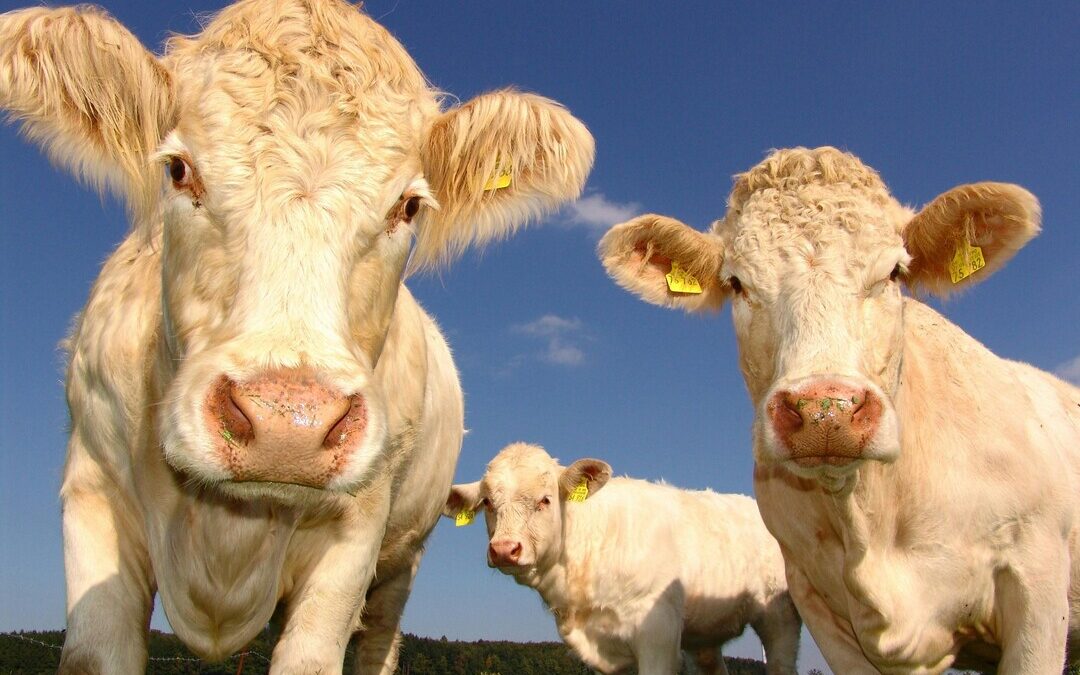EU Farmers Lose $32.7B a Year as Methane Policy Gaps Block Green Transition
EU report warns farming loses billions to climate shocks as methane policy gaps stall green transition financing.
Europe’s agriculture sector is losing more than €28 billion ($32.69 billion) a year to climate shocks while its largest source of greenhouse gases – methane from livestock – remains poorly regulated, a new report warns.
The study, “Methane Abatement Now: Financing Agrifood Transition in the EU,” released with support from the Global Methane Hub, said unclear policies and a lack of financing risk leave the sector as a “roadblock” to Europe’s climate neutrality goals.
Rising Losses, Stalled Emissions Cuts
Farmers across the bloc are already losing 6 percent of production annually, or €28.3 billion, from extreme weather such as droughts and floods. In a catastrophic year, losses could double to €57.5 billion, the report said.
Agriculture accounts for 56 percent of EU methane emissions, mostly from cattle digestion and manure. Globally, methane represents 75 percent of agricultural greenhouse gases, and in Europe, just 10 percent of cattle farms account for the bulk of emissions.
Despite methane’s role as a highly potent greenhouse gas, agricultural emissions fell by only 4 percent between 2005 and 2022, compared with deeper cuts in the energy and industrial sectors. Enteric fermentation from cattle alone made up two-thirds of methane from farms in 2020.
Policy Vacuum Undermines Action
The report highlights what it calls a dangerous “definition gap.” Agriculture has no methane-specific reduction target, no clear net-zero pathway, and no EU-level definition of sustainable farming practices.
Cattle farms, the largest source of methane, are excluded from the Industrial Emissions Directive, which only covers pigs and poultry. Agriculture is also left out of the EU’s green taxonomy, making it harder for banks to classify farm lending as green under their balance sheet disclosures.
“The absence of definitions and pathways removes the possibility of aligning subsidies and finance with credible climate goals,” the study said.
Subsidies Without Transition
The Common Agricultural Policy dispenses €57.5 billion annually, about a quarter of the EU budget. Yet most of it still flows to land-based payments rather than climate-aligned transition.
Farmers have called for reform to move away from area-based subsidies, which favor large landholders, toward incentives that reward sustainable practices.
The financing gap is stark. Farmers needed €62 billion more in funding in 2022, with 61 percent of unmet demand coming from small farms. Much of that shortfall was for green investment, underlining the urgency of creating channels for climate lending.
Unlocking Private Investment
The report urges the European Commission to repurpose CAP funding, set clear methane reduction targets, and develop credible transition pathways that could attract banks and investors.
Options include creating a voluntary EU green loan label, offering guarantees for high-risk technologies such as biogas, and expanding the role of the European Investment Bank in de-risking agricultural lending.
Globally, agriculture, forestry and land use attracted just 0.4 percent of mitigation finance in 2022, underscoring how far farm emissions lag behind other sectors in attracting capital.
Taxes, Trade and Consumer Shifts
The authors recommend a gradual introduction of a livestock emissions tax to incentivize cuts, with revenues ring-fenced to support smaller farms and rural areas. Denmark has already agreed to introduce such a tax in 2030.
An extension of the EU’s Carbon Border Adjustment Mechanism to livestock products could prevent carbon leakage and ensure imports face the same standards as European farmers.
On the demand side, measures such as sustainability labelling, public procurement policies and taxation changes could encourage dietary shifts away from beef and lamb, the most methane-intensive foods.
The report also backs an EU Action Plan for Plant-based Foods by 2026 to strengthen supply chains for alternatives.
Just Transition Risks
With emissions concentrated in a few regions – notably France, Germany and Ireland – the report warns of social risks if costs fall unfairly on smallholders or consumers already strained by high food prices.
It calls for tailored territorial action plans, lighter reporting rules for very small farms, and clear commitments from major food distributors not to pass transition costs onto farmers.
The agrifood sector contributes €900 billion in value annually and 15 percent of EU jobs, making its climate resilience essential to both economic and food security.
Rapid methane abatement offers Europe its “best chance” to meet the Paris Agreement’s temperature goals while protecting agriculture, the report concludes. But progress depends on closing policy gaps and unlocking both public and private finance.
“Fixing the policy gap and unlocking finance is urgent,” the report said. “Without decisive action, agriculture will remain a major obstacle to climate neutrality.”
Nirmal Menon
Related posts

Subscribe
Error: Contact form not found.


